With the special political sensitivity of an experienced revolutionary, in early 1930, leader Nguyen Ai Quoc promptly convened and chaired the Conference to unify communist organizations to establish the only Communist Party in Vietnam. The premises for the birth of the Party had been prepared by him in advance, since determining the path to save the country.
After receiving Lenin's Theses , from an ardent patriot, Nguyen Ai Quoc quickly became a pioneer revolutionary soldier, a communist. The results of the dynamic process of practical activities and the initial reception of theory further clarified the path to save the nation that he was looking for and led to the second important decision after the decision to go to the West to find a way to save the country . That was the decision to bring the liberation struggle of the Vietnamese people along Lenin's revolutionary path.
“Without revolutionary theory, there is no revolutionary movement” (VI Lenin) - but that is only a necessary condition. To have a strong revolutionary movement and achieve victory, in addition to correct revolutionary theory, the indispensable sufficient condition is to build a strong revolutionary party and have a contingent of revolutionary cadres with enough enthusiasm and capacity to apply revolutionary theory to the practical struggle movement.
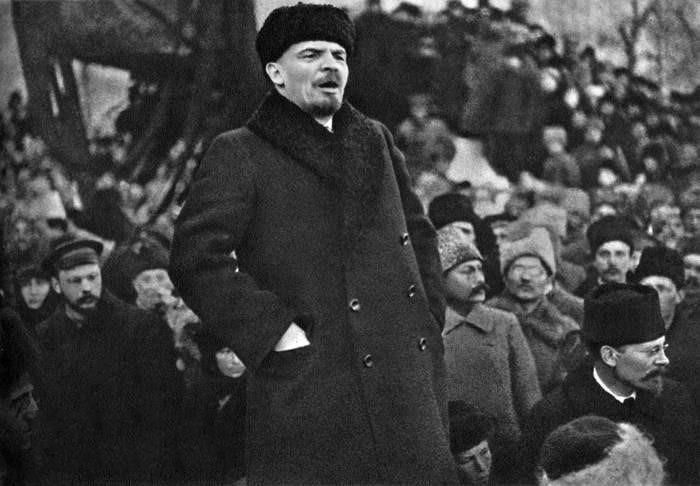 |
| VI Lenin - the great leader of the world 's proletariat, founder of the Communist International; at the same time led the Russian people to carry out the October Revolution, establishing the world's first workers' and peasants' state led by the Party of the proletariat. (Source: VNA). |
With the spirit: For a revolution to succeed, first of all there must be a revolutionary Party... Only with a strong Party can the revolution succeed, Nguyen Ai Quoc made constant efforts to promote all-round preparations to establish a communist party in a colony so that it could assume the leadership position of the Vietnamese people in the struggle for national liberation.
After many requests to the leaders of the Eastern Bureau of the Communist International, in November 1924, Nguyen Ai Quoc went to Guangzhou under the public name of an interpreter in the Borodin delegation - political advisor of the Communist International to the Sun Yat-sen government . In Guangzhou at that time, there was the Tam Tam Xa group - a patriotic organization of progressive Vietnamese youth in the Vietnam Restoration Association established in 1923. The brave bomb sound of Pham Hong Thai - a member of Tam Tam Xa, who attempted to assassinate the Governor General of Indochina, Merlan, on June 19, 1924 in Sa Dien still resonated in the hearts of patriotic Vietnamese youth.
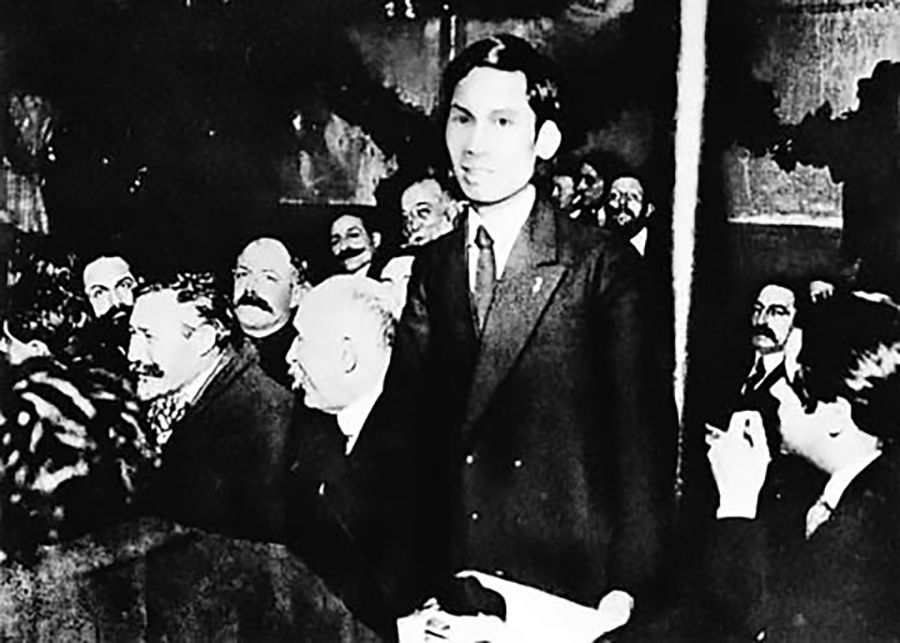 |
| From December 25-30, 1920, Nguyen Ai Quoc attended the 18th Congress of the French Socialist Party in the city of Tours as a delegate of Indochina. (Source: National Museum of History) |
From Moscow, Nguyen Ai Quoc saw this as a “bird of good news”. The typical members of Tam Tam Xa were Ho Tung Mau, Le Hong Son, Le Hong Phong, Pham Hong Thai… This was a group of enthusiastic young people, ready to sacrifice for the Fatherland, but their path to save the country was not yet clearly defined. Immediately after arriving in Guangzhou (November 11, 1924), Nguyen Ai Quoc chose the first nuclei for the Vietnamese revolution, who were the loyal members of the Tam Tam Xa group. on the belief in the patriotic enthusiasm of the young generation.
From the first nucleus, Nguyen Ai Quoc established the Vietnam Revolutionary Youth Association (1925), founded Thanh Nien newspaper - the first newspaper of the Vietnamese revolution (June 21, 1925), and organized cadre training classes. Nguyen Ai Quoc was both the organizer of the class, the compiler of teaching materials, and the teacher who directly imparted the learning content. During the years 1924-1927, he also undertook and successfully completed the task of an international soldier assigned by the Communist International.
Students attending training courses opened by Nguyen Ai Quoc were selected based on their willingness to sacrifice and strive for the aspiration of national liberation and their patriotic activities. The number of students directly trained by Nguyen Ai Quoc in three courses in Guangzhou included 75 people: Course 1 had 10 people; Course 2 had 25 people; Course 3 had 50 people - according to Nguyen Ai Quoc's report to the Communist International on June 3, 1927 (Ho Chi Minh Institute - Nguyen Ai Quoc in Guangzhou 1924-1927 - National Political Publishing House, Hanoi, page 57).
The students attending the training class in Guangzhou had never been exposed to Marxism-Leninism or the proletarian revolutionary line. However, in a limited period of time, they were equipped with a rich amount of political knowledge. The new learning content, but focusing on the most core issues in the revolutionary line and methods, attracted the students' enthusiasm for learning.
Nguyen Ai Quoc had a lively and attractive way of teaching with many specific and practical examples, suitable to the cognitive level of the subjects, thus clarifying many theoretical issues that were complex and difficult to understand. Nguyen Ai Quoc's appropriate teaching method not only helped students deeply remember what they had learned but also helped them develop creativity when practicing in reality. In addition to learning theory, students also had to practice, practice giving speeches, practice explaining, and practice lecturing others.
During the practice, what he always emphasized was knowing how to attract listeners, knowing how to use appropriate language, the content must be easy to understand, appropriate to the listeners, the evidence must be honest and specific... With a speaking and writing style that is easy to understand, easy to remember, concise, and succinct, Nguyen Ai Quoc helped students easily grasp even complex theoretical issues.
Not only did he study theory, after class hours, Nguyen Ai Quoc led his students to penetrate into the reality of the struggle that was taking place in Guangzhou, Hong Kong, and participate in the rallies and marches of the revolutionary masses. Later, a student recalled: "Just participating in those struggles and revolutionary activities was enough to learn for a lifetime" (Memoirs of Nguyen Cong Thu Following the Revolutionary Path kept at the Party History Research Board of Thai Binh Province - Quoted from the Ho Chi Minh Institute - Nguyen Ai Quoc in Guangzhou (1924-1927) , National Political Publishing House, Hanoi, 1998, pages 63-64).
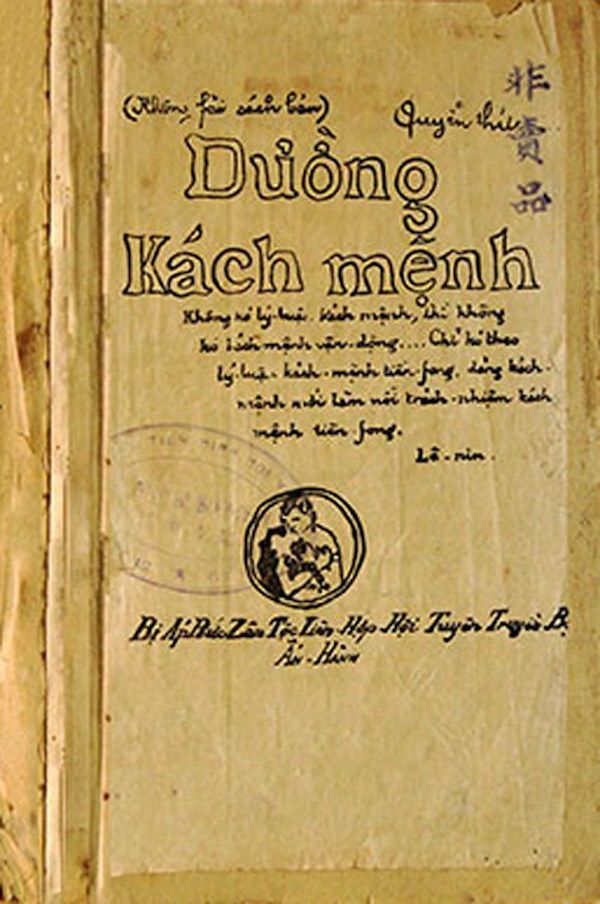 |
“The Revolutionary Path” is a collection of lectures by Nguyen Ai Quoc at training courses for cadres of the Vietnam Revolutionary Youth Association, held in Guangzhou (China) between 1925 and 1927. (Photo: VNA) |
The contents of Nguyen Ai Quoc's lectures at the cadre training class in Guangzhou were compiled by the Union of Oppressed Peoples into a thin book titled The Revolutionary Path , published in 1927. With its general content, The Revolutionary Path is a great theoretical work expressing Nguyen Ai Quoc's independent, self-reliant, and creative revolutionary spirit. This is not only the first political textbook of the Vietnamese revolution, but its content also lays the foundation for the formation of the revolutionary path to liberate the Vietnamese nation.
After being trained, cadres who work in the movement must prove their qualities and abilities with concrete results, and must unite the entire population to lead the masses in the struggle. Therefore, ensuring the quality of cadre training is something that Nguyen Ai Quoc always emphasized. From the first class in Guangzhou, Nguyen Ai Quoc's viewpoint on cadre training was clearly shown, which he later repeated many times: "Practicality and thoughtfulness are better than greed."
The learning content was rich but arranged logically and scientifically, so it was well absorbed by the students. As soon as they returned to the country, the team of students was able to immediately apply the knowledge they had learned to the practical struggle. Those who attended the training class in Guangzhou in the years 1925-1927 were the first class of cadres of the Party. Many of them became excellent revolutionary leaders: Tran Phu, Nguyen Duc Canh, Do Ngoc Du, Le Thiet Hung, Phung Chi Kien, Nguyen Son, Nguyen Luong Bang, Pham Van Dong... This was also the earliest political training class, opened before the Party was born. Despite the difficult organizational conditions and the urgent time, the results and significance of the cadre training class in Guangzhou were very important.
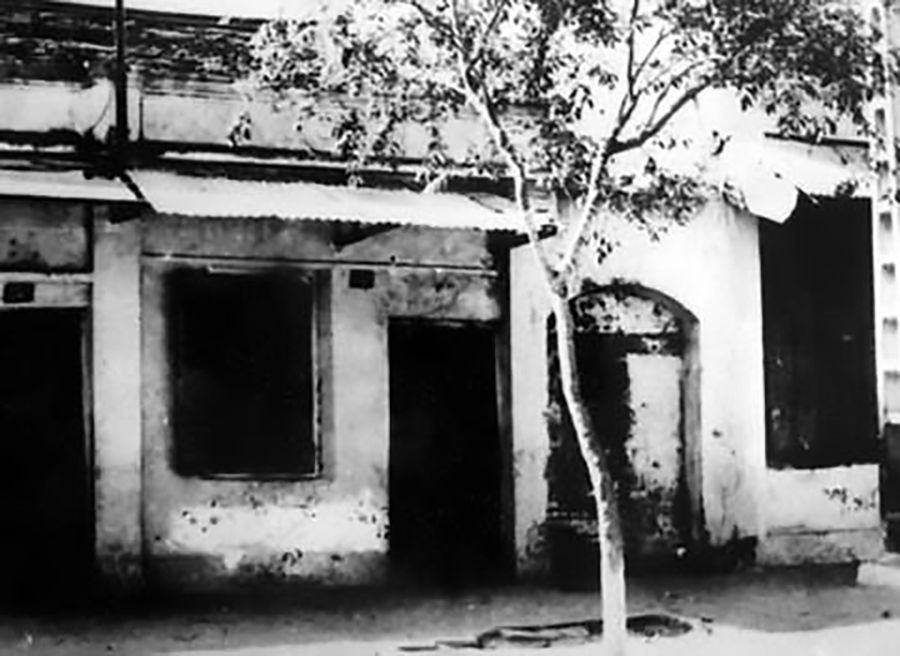 |
House number 5D Ham Long street. (Source: baotanglichsu.vn) |
With only a few dozen initial core members, after two years the number of members of the Vietnam Revolutionary Youth Association had grown to thousands, and the Association's bases had developed widely throughout the country. According to the letter of the Annam Communist Party Branch in China (mainly those in the Youth General Department) sent to the Communist International, as of May 1929: "In the North there were 700 official members and 1,000 sympathizers; in the Central region there were 1,000 members, of which 500 were official members; in the South there were 100 members, of which 40 were official members" (Communist Party of Vietnam: Complete Party Documents , National Political Publishing House, Hanoi, 1998, volume 1, page 371).
In the period 1927-1930, with the vigorous and vigorous activities of the cadres of the Vietnam Revolutionary Youth Association, the Vietnamese revolutionary movement had a leap forward compared to the previous period. The strong development of the Vietnamese revolutionary movement required a Communist Party to take on the role of revolutionary leadership in place of the Vietnam Revolutionary Youth Association .
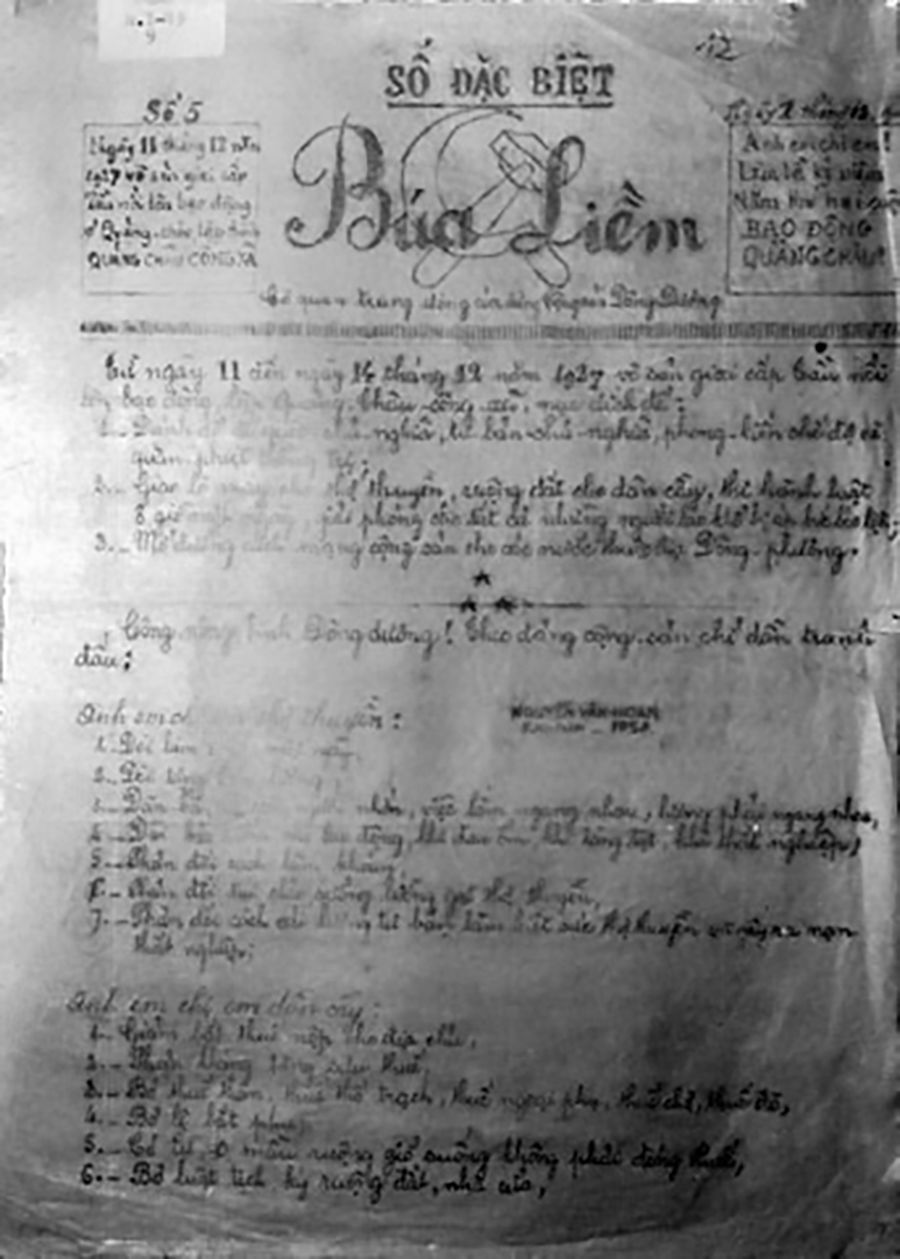 |
Hammer and Sickle Newspaper, the central organ of the Indochinese Communist Party, No. 5, December 11, 1929. (Photo: VNA) |
In March 1929, the most active members of the Northern Vietnam Revolutionary Youth Association established the first communist cell at No. 5D Ham Long Street (Hanoi). From this core, the progressive cadres of the Northern Vietnam Revolutionary Youth Association actively promoted the establishment of the Indochinese Communist Party on June 17, 1929. The Youth Central Committee and the Southern Region Committee also reformed themselves into the Annam Communist Party in August 1929. In September 1929, the Tan Viet Revolutionary Party delegates issued a Declaration officially establishing the Indochinese Communist Federation.
All three organizations claimed to be communist. Party members in all three communist organizations actively expanded their grassroots networks, developed party members, and expanded their scope of activities. Each organization claimed to be a true communist and accepted the role of revolutionary leadership. This disunity dispersed the movement’s strength and caused doubts among the masses. This situation caused great harm to the overall revolutionary movement. This reality created an urgent need to unify communist organizations into a single Communist Party to be able to assume the historic role of leading the national liberation revolutionary movement in Vietnam.
In July 1928, Ho Chi Minh arrived in Siam (Thailand). According to his report: From Siam, “I tried to return to Annam twice, but had to turn back. The secret police and border police were too careful” (Ho Chi Minh (2011): Complete Works, National Political Publishing House, Hanoi, volume 3, page 13). At the end of December 1929, Ho Chi Minh left Siam for China as a representative of the Communist International, convening and chairing the Conference to unify communist organizations to establish a single Communist Party in Vietnam.
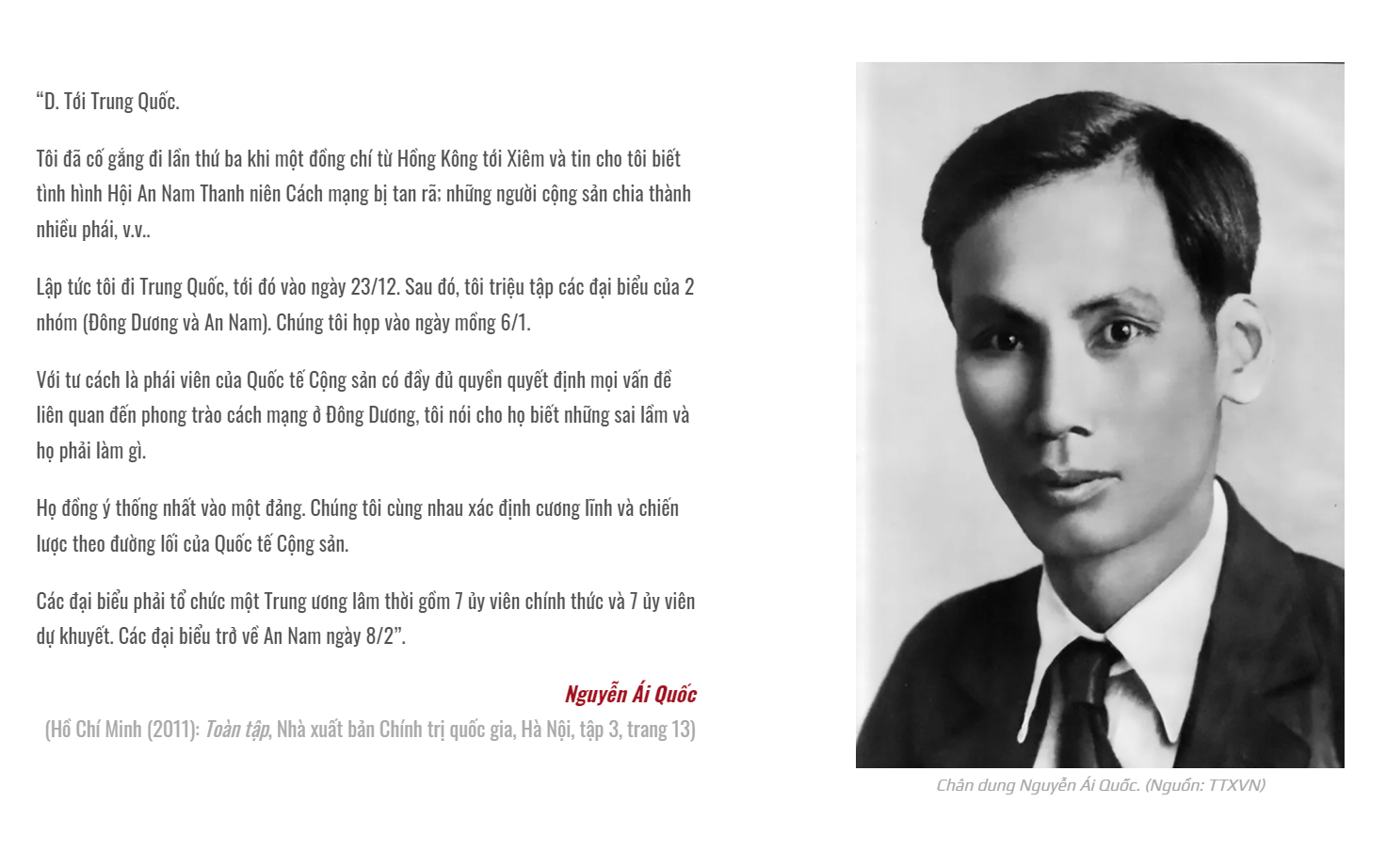 |
During the Canh Ngo Lunar New Year (1930), five (official) delegates met under the chairmanship of leader Nguyen Ai Quoc to discuss an important matter: Unifying communist organizations in Vietnam to establish a single communist party, representing the voice of national independence and national unity.
The conference to unify Vietnamese communist organizations held in Hong Kong included representatives of the Indochinese Communist Party (Trinh Dinh Cuu, Nguyen Duc Canh) and the Annam Communist Party (Nguyen Thieu, Chau Van Liem). Nguyen Ai Quoc was the representative of the Communist International who convened and chaired the conference. Analyzing the role and responsibility of communists before the fate of the nation, Nguyen Ai Quoc requested high unity among Vietnamese communists. With his prestige and experience, Nguyen Ai Quoc's analysis of the role and responsibility of communists before the fate of the nation received the consensus of the delegates. Nguyen Ai Quoc united Vietnamese communists, guiding revolutionary fighters toward a common goal. The delegates attending the Conference agreed with Nguyen Ai Quoc's proposal to merge the two communist organizations into the Communist Party of Vietnam, adopting the Party's Brief Platform, Brief Strategy and Brief Statutes drafted by Nguyen Ai Quoc.
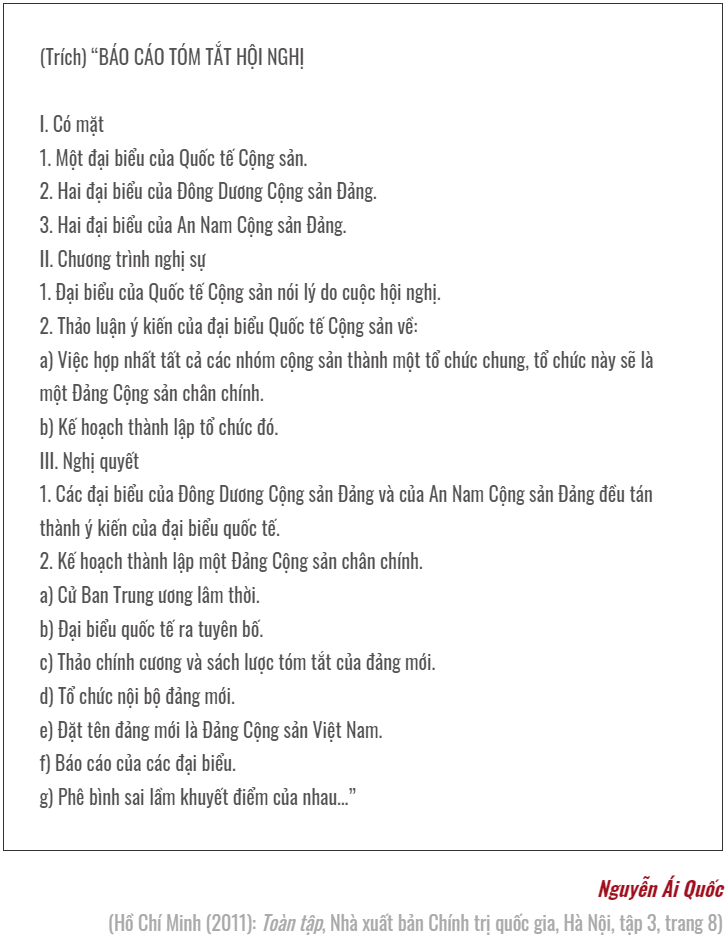 |
After the Party unification conference, Nguyen Ai Quoc wrote an appeal to joyfully announce: “The Communist Party of Vietnam has been established. It is the Party of the proletariat. The Party will lead the proletariat to lead the Annam revolution to fight to liberate all of our oppressed and exploited brothers and sisters” (Ho Chi Minh (2011): Complete Works , National Political Publishing House, Hanoi, volume 3, page 22). In his report to the Communist International (February 18, 1930), he wrote: “From now on, with the right policy and unity, we can be sure that the Communist Party will progress rapidly” (Ho Chi Minh (2011): Complete Works , National Political Publishing House, Hanoi, volume 3, page 15).
Author T. Lan, While traveling and telling stories , recounted: “In 1930 - February, from around the 5th to the 8th, Nguyen Ai Quoc “treated” the delegates to a meal on the occasion of the Lunar New Year, both economical and lavish, on the occasion of the founding of the Party” ( Ho Chi Minh - Biography Chronicle, National Political Publishing House, Hanoi, 2006, volume 2, page 6). Just a few short lines also show many things about his personality, style and great spirit and thoughts. The intimate meal “both lavish” - expressing joy at the solidarity and unity of comrades, “both economical” - is still the familiar simple style of President Ho Chi Minh, but also shows the carefulness, the concern and preparation for the long journey. The warm atmosphere among the comrades who had just completed an important task during the Tet holidays far from home further fueled their determination and brightened their hope.
On February 24, 1930, at the request of the Indochinese Communist Federation, two members of the Provisional Executive Committee and the Secretary of the Southern Executive Committee met in Saigon to recognize and admit this communist organization into the Communist Party of Vietnam. The unification of three predecessor communist organizations into the Communist Party of Vietnam, the transformation of communist cells into Party cells, and the election of the Provisional Central Executive Committee were quickly completed in practice. The establishment of the Communist Party of Vietnam marked a turning point in the Vietnamese revolution, ending the crisis in the path to national salvation in Vietnam for decades.
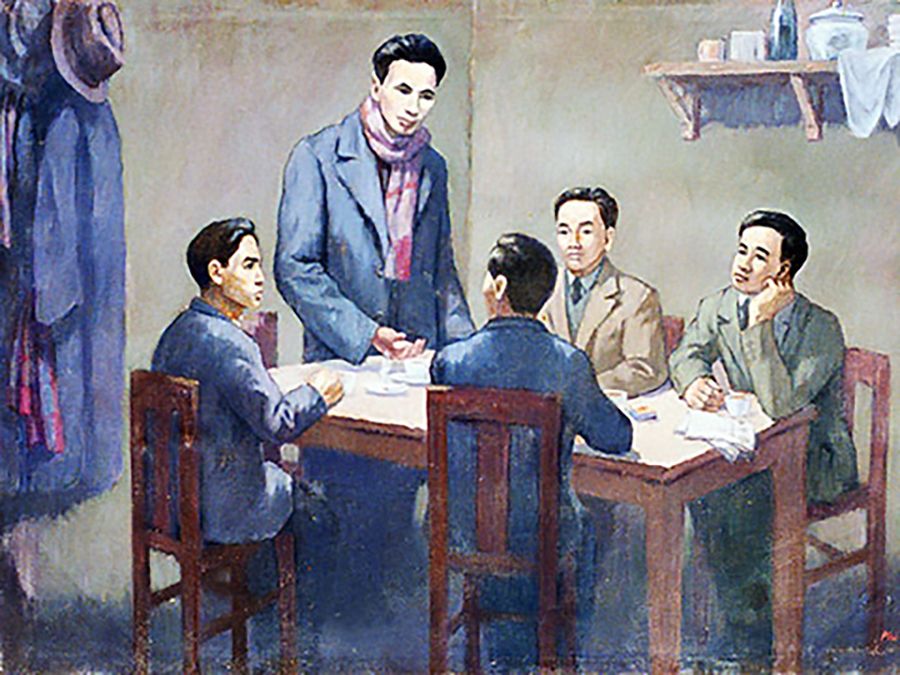 |
Conference to establish the Communist Party of Vietnam on February 3, 1930. (Photo taken from a painting by artist Phi Hoanh at the National Museum of History) |
This event also recorded the solidarity and unity of communist soldiers right from the beginning of the fledgling organization. Disagreements between communists were put aside so that all could work towards the common noble goal of fighting for national independence and happiness for the people.
The successful unification conference to establish the Party also recognized the important contribution of Nguyen Ai Quoc when he determinedly and wisely tightened the ranks of Vietnamese communist soldiers on the path of struggle from the initial arduous steps. After 93 years, we see more clearly the dynamism, creativity, sensitivity, timeliness and great role of leader Nguyen Ai Quoc in the turning point event of the Vietnamese revolutionary movement and of the nation's history in general.
Source: Nhan Dan Newspaper
Source link




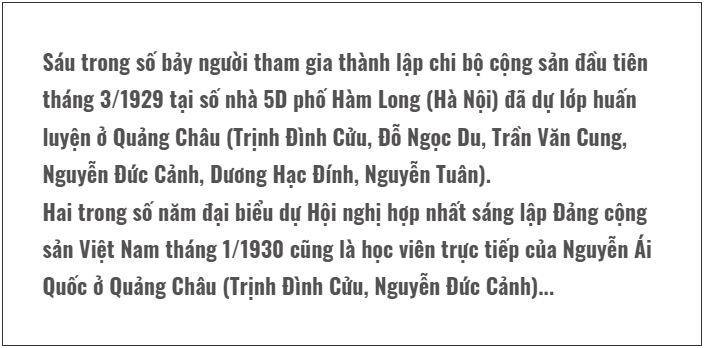









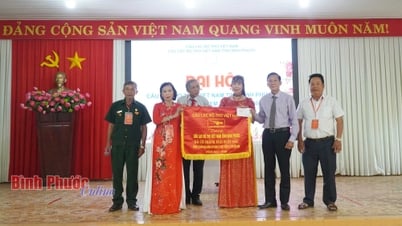


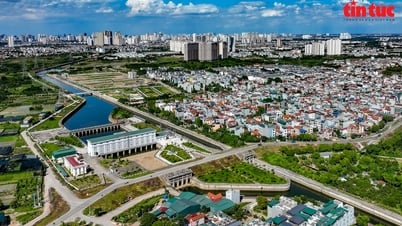
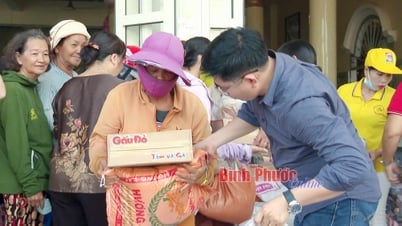
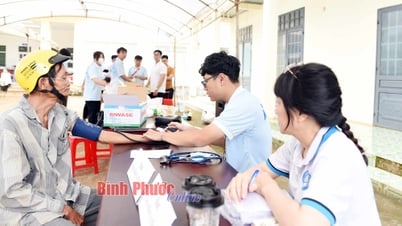




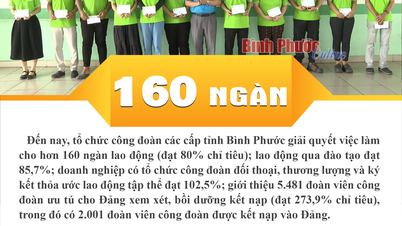
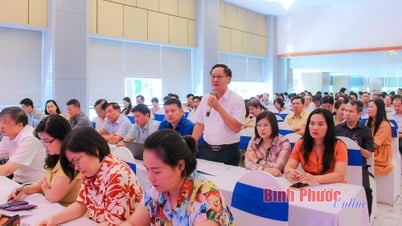
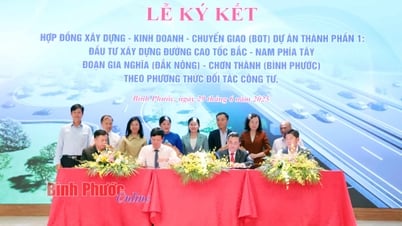
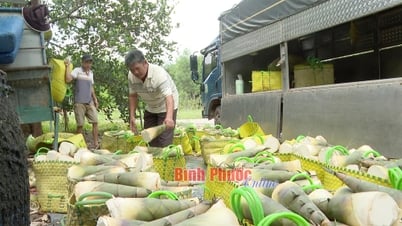



![[Photo] Ready for the 2025 Fall Fair](https://vphoto.vietnam.vn/thumb/1200x675/vietnam/resource/IMAGE/2025/10/14/1760456672454_ndo_br_chi-9796-jpg.webp)



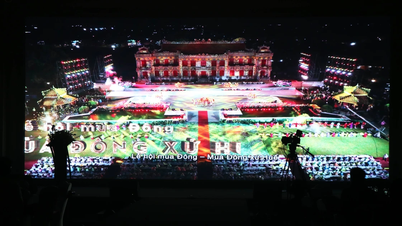




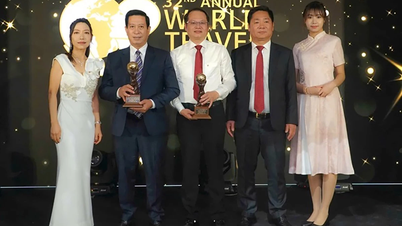

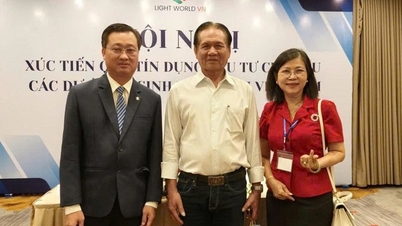

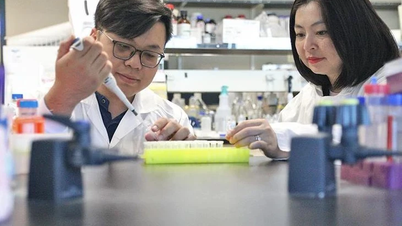

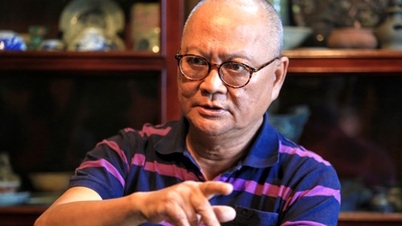







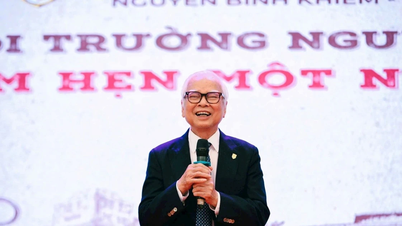

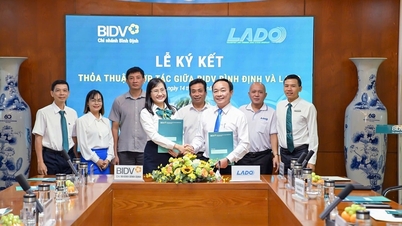

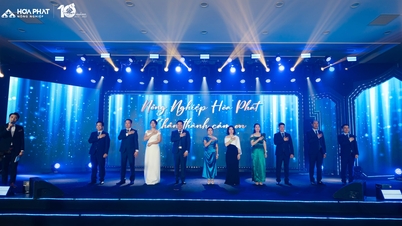


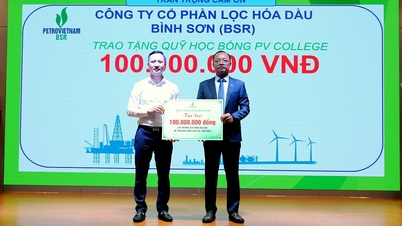
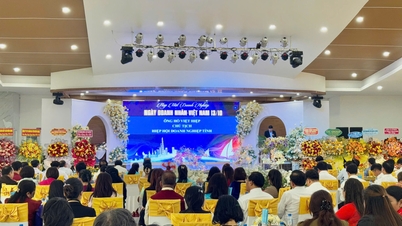
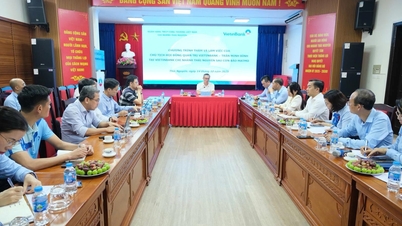






![[Photo] General Secretary To Lam chairs the meeting of the Central Steering Committee on science, technology development, innovation and digital transformation](https://vphoto.vietnam.vn/thumb/402x226/vietnam/resource/IMAGE/2025/10/15/1760500443782_anh-man-hinh-2025-10-15-luc-10-52-47.png)
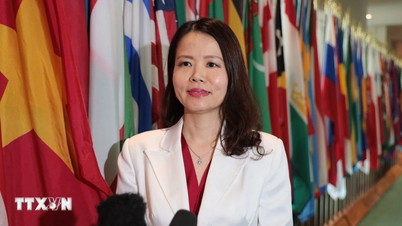
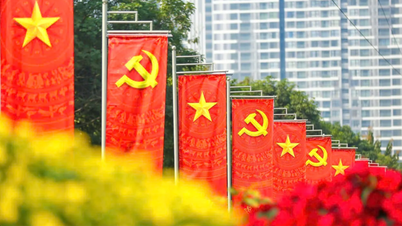

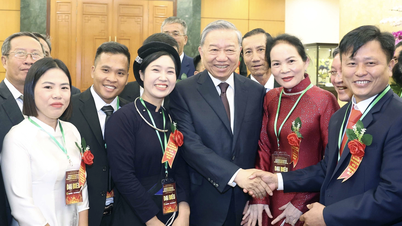

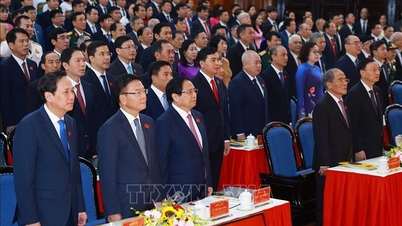

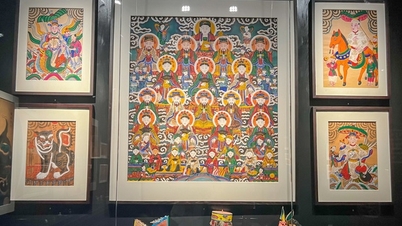

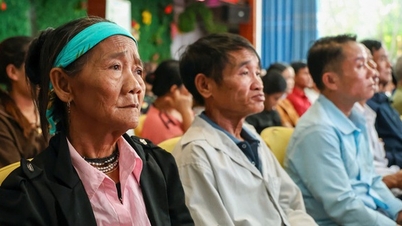

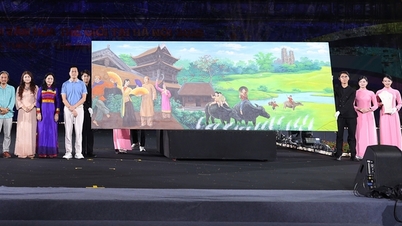

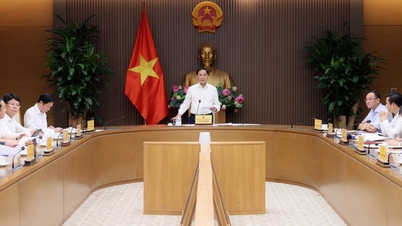
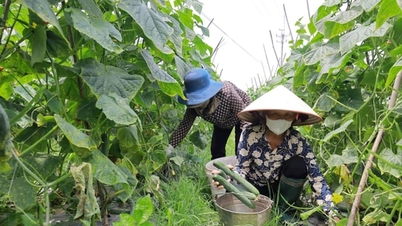

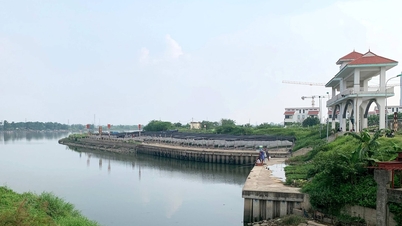

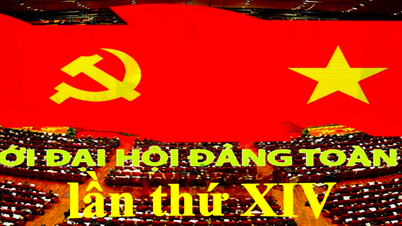



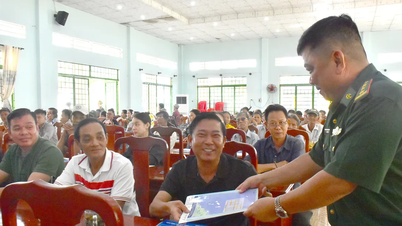

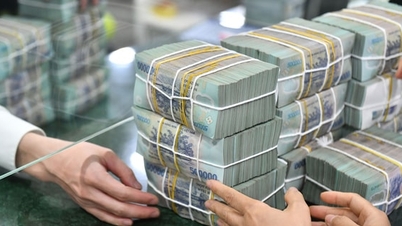















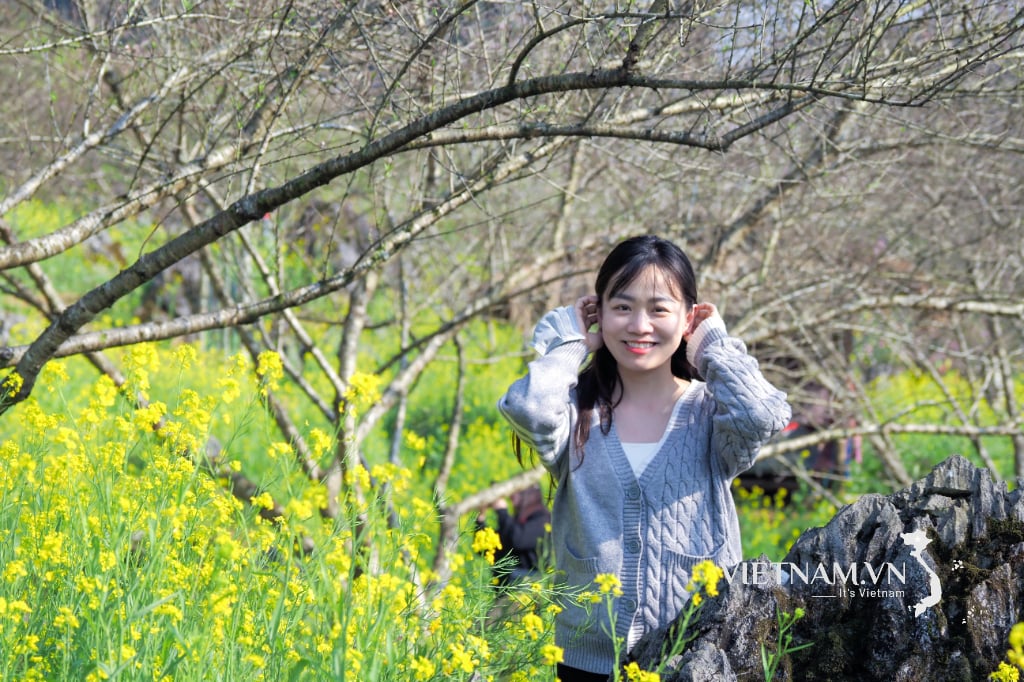
Comment (0)